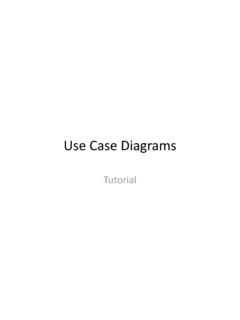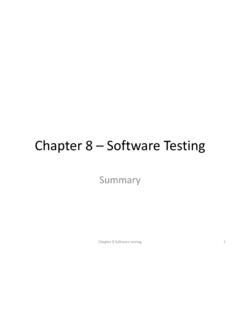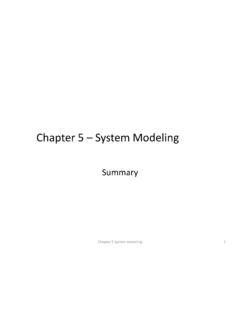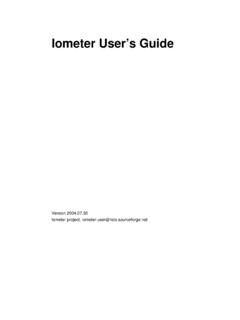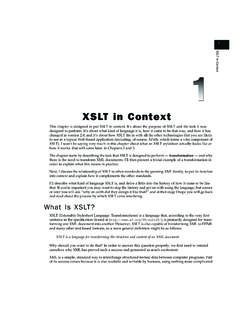Transcription of A Tutorial on XHTML and XML - SEIDENBERG …
1 A Tutorial on XHTML and XML Copyright 2008 Dr. Lixin Tao Pace University Table of Contents 1 Web Pages Using Web Standards .. 1 Overview .. 1 Web Architecture .. 2 HTML Basics .. 4 Tags, Elements and Attributes .. 4 Basic Structure of an HTML File .. 6 Basic HTML Elements .. 7 Cascading Style Sheets (CSS) .. 18 Style Rule Format .. 20 Box Model .. 20 Formatting Text .. 22 Formatting a Subset of Element Instances .. 24 Customizing Hyperlinks with Pseudo-Classes .. 25 Formatting Part of Text or Document with Span and Div .. 26 Division-Based Layout .. 30 Dynamically Loading HTML Files in iframes .. 32 HTML Forms and HTTP Basics .. 34 HTTP Basics .. 34 HTML Forms .. 36 Common HTML Form Input Controls .. 40 HTTP GET vs. HTTP POST .. 43 Session Data Management .. 44 Cookies .. 44 Hidden Fields .. 45 Query Strings .. 45 Server-Side Session Objects .. 45 Summary .. 46 Self-Review Questions .. 46 Keys to the Self-Review Questions.
2 49 Exercises .. 49 Programming Exercises .. 49 References .. 50 2 XML the X in Ajax .. 51 Overview .. 51 XML Documents .. 53 XML 54 Unicode Encoding .. 54 Tags, Elements and Attributes .. 54 Using Special Characters .. 55 ii Well-Formed XML Documents .. 56 DTD .. 56 Declaring Elements .. 57 Declaring Attributes .. 59 Declaring Entity Names .. 60 Associating DTD Declarations to XML Documents .. 60 XML Schema .. 62 XML Namespace .. 63 Declaring Simple Elements and Attributes .. 64 Declaring Complex Elements .. 65 Controlling Element Order and Repetition .. 67 Referencing XML Schema Specification in an XML Document 68 XML Parsing and Validation with SAX and DOM .. 70 XML Transformation with XSLT .. 70 Identifying XML Nodes with XPath .. 71 Transforming XML Documents to XHTML Documents .. 74 Summary .. 77 Self-Review Questions .. 77 Keys to the Self-Review Questions .. 79 Exercises.
3 79 Programming Exercises .. 79 References .. 79 Index .. 81 1 Web Pages Using Web Standards Overview Web Architecture HTML Basics Cascading Style Sheets (CSS) HTML Forms and HTTP Basics Session Data Management Summary Self-Review Questions Keys to the Self-Review Questions Exercises Programming Exercises References Objectives of This Chapter Introduce fundamental concepts of Web computing Introduce XHTML and Cascading Style Sheets Introduce how HTTP protocol supports Web browser and Web server interactions Introduce different ways of maintaining session data Overview A Web browser is a graphic user interface for a user to interact with various Web applications. A Web browser communicates with the Web servers that host the Web applications over the Internet. A Web browser can send requests to a Web server for data or service. The Web server will reply and send back the response data in a language called HTML, short for Hypertext Markup Language.
4 The Web browser can then present the response data to the user following some rendering directives or defaults. The focus of this chapter is the introduction to the basics of HTML languages. There are several variations of HTML languages in use now. The popular HTML version 4 is more lenient to syntax errors and has limited support for presenting data in various presentation devices like PCs, PDAs or cellular phones. The 2 Web Pages Using Web Standards XHTML , short for Extensible Hypertext Markup Language, rewrites HTML in XML (Extensible Markup Language, to be covered in Chapter 3) for better supporting flexible data presentation on different devices. At this time the browser support for XHTML is still limited. This chapter introduces a subset of XHTML that is supported by any Web browser that supports the traditional HTML version 4, and HTML and XHTML are treated as synonyms. The chapter starts with the introduction of the basic Web architecture underpinning all Web applications.
5 A typical Web application has four tiers: the presentation tier on the client side (Web browsers), the presentation tier on the Web servers, the business logic tier on the application servers, and the database tier on database servers. Different types of servers may co-exist on a single server machine. HTML ( XHTML ) basics will be introduced for mainly defining logical data (contents) structures, and Cascading Style Sheets or CSS will be introduced as an important mechanism for defining presentation styles of HTML elements. Since XHTML is a special dialect of XML, the HTML introduction in this chapter also serves as the first-iteration introduction to XML discussed in the following chapter. Web browsers and Web servers communicate through a simple application protocol named HTTP, short for Hypertext Transfer Protocol, on top of the TCP/IP network transportation layer. This chapter will explain the HTTP protocol basics and how HTML forms can be used as the main mechanism for submitting user data to a Web server application.
6 The basic properties of a Web browser will then be outlined. In particular, you will see what cookies are, and how a Web browser exchanges cookies with Web server applications. This chapter will also briefly explain the security sandbox for applets and JavaScipts. Web Architecture A typical web application involves four tiers as depicted in Figure 1: Web browsers on the client side for rendering data presentation coded in HTML, a Web server program that generates data presentation, an application server program that computes business logic, and a database server program that provides data persistency. The three types of server programs may run on the same or different server machines. 3 Web browsers can run on most operating systems with limited hardware or software requirement.
7 They are the graphic user interface for the clients to interact with Web applications. The basic functions of a Web browser include: Interpret HTML markup and present documents visually; Support hyperlinks in HTML documents so the clicking on such a hyperlink can lead to the corresponding HTML file being downloaded from the same or another Web server and presented; Use HTML form and HTTP protocol to send requests and data to Web applications and download HTML documents; Maintain cookies (name value pairs, explained later in this chapter) deposited on client computers by a Web application and send all cookies back to a Web server if they are deposited by Web applications from the same Web server (cookies will be discussed more later in this chapter); Use plug-in applications to support extra functions like playing audio-video files and running Java applets; Implement a Web browser sandbox security policy: any software component (applets, JavaScripts) running inside a Web browser cannot normally access local clients resources like data files or keyboards, and can only communicate directly with applications on the Web server from where it is downloaded.
8 The Web server is mainly for receiving document requests and data submission from Web browsers through the HTTP protocol on top of the Internet s TCP/IP layer. The main function of the Web server is to feed HTML files to the Web browsers. If the client is requesting a static existing file, it will be retrieved on a server hard disk and sent back to the Web browser right away. If the client needs customized HTML pages like the client s bank statement, a software component, like a JSP page or a servlet class (the Extension box in Figure 1), needs to retrieve the client s data from the database and compose a response HTML file on-the-fly. The application server is responsible for computing the business logics of the Web application, like carrying out a bank account balance transfer and computing the shortest route to drive from one city to another. If the business Figure 1 Web architecture Internet TCP/IP Web server App server Extension Tier 1 Web browser Tier 2 Web server Tier 3 App Server Tier 4 Database DBMS HTTP HTTP HTTP 2 Web Pages Using Web Standards logic is simple or the Web application is only used by a small group of clients, the application server is usually missing and business logics are computed in the JSP or servlet components of the Web server.
9 But for a popular Web application that generates significant computation load for serving each client, the application server will take advantage of a separate hardware server machine to run business logics more efficiently. This is a good application of the divide-and-conquer problem-solving methodology. This chapter focuses on the basics of HTML, CSS and HTTP that supports efficient data presentation and browser-server interaction. HTML Basics HTML is a markup language. An HTML document is basically a text document marked up with instructions as to document logical structure and document presentation. There are multiple versions of HTML. While the earlier HTML versions used a more relaxed syntax and focused on more document presentation than document structure, the latest HTML, called XHTML (the Extensible HyperText Markup Language), uses the more strict and standard XML (Extensible Markup Language, to be covered in the next chapter) syntax to markup text document structures and depends on the separate CSS (Cascading Style Sheet) to control the presentation of the document.
10 This separation of document structure and document presentation, even though it is not complete yet, is essential for supporting the same document being rendered by various modern presentation devices including PCs and cell phones that must use very different presentation markups. The HTML concepts and examples in this chapter are based on XHTML , which is now supported by all the latest Web browsers including Microsoft s Internet Explorer v7 and Mozilla s Firefox v2. Tags, Elements and Attributes An HTML tag name is a predefined keyword, like html, body, head, title, p, b, all in lower-case, for describing document structure or presentation. A tag name is used in the form of a start tag or an end tag. A start tag is a tag name enclosed in angle brackets < and >, like <html> and <p>. An end tag is the same as the corresponding start tag except it has a forward slash / immediately before the tag name, like </html> and </p>.
